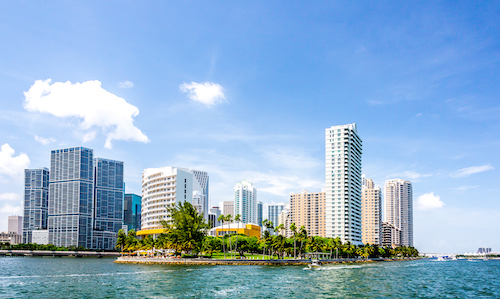Census names South Florida’s fastest-growing cities
New city-level population estimates from the U.S. Census Bureau released May 23 show Doral lost its long-running title as the fastest-growing incorporated city within Miami-Dade County between 2017 and 2018.
The title instead went to North Miami, which recorded a 3.2 percent growth rate between July 1, 2017 and July 1, 2018. North Miami added 2,000 residents in that period for a total population of just under 63,000. Sweetwater and Miami Lakes came in second and third place in terms of growth rate, at 2.8 percent and 2 percent, respectively. Doral, which had been the top gainer for the last several years, only grew 1.5 percent in the last year, down substantially from 4.4 percent in 2017.
The City of Miami itself grew by 1.9 percent for a total headcount of 470,914 as of last July. While the Miami-Fort Lauderdale-Palm Beach metro area is still the most populous in Florida, Jacksonville still claims the top spot for the most populous city with an estimated 904,000 residents.
Florida obtains federal funds for Hurricane Michael relief
Earlier this month, the U.S. Department of Housing and Urban Development (HUD) announced it had awarded nearly $1.5 billion to seven states, including Florida, to fund ongoing recovery efforts related to several natural disasters that struck in 2018. Florida alone received approximately $448 million in block grants to be allocated to the areas most impacted by Hurricane Michael. The category 5 storm was the strongest to make landfall on the U.S. mainland since Hurricane Andrew in 1992 and the third-strongest ever recorded in the U.S.
In conjunction with the release of federal funding, Florida Governor Ron DeSantis and the Florida Housing Finance Corporation announced in a May 21 press release that the state would introduce two new home loan programs for Floridians affected by Hurricane Michael. This primarily includes residents of the Florida Panhandle, where the storm made landfall in the U.S.
One program, the Homeownership Loan Program (HLP), will offer 30-year interest-free loans to qualifying residents of storm-damaged areas, as well as up to $15,000 of down payment and closing cost assistance. HLP loans will also be non-amortizing and forgivable at 20 percent per year over five years, or fully forgivable for active duty military members who are reassigned after closing. The second program, the Homeownership Pool Program (HOP), will create a fund that eligible home builders can tap to provide low-interest mortgages to buyers in storm-damaged communities. In addition, Florida will allocate some $30 million toward the construction of more than 200 new units of affordable housing in affected counties including Bay, Gulf, Jackson and Wakulla counties.
New service caters to pocket listings
So-called pocket listings, also known as exclusive or off-market listings, are becoming more common across the real estate industry. A new website, ThePLS.com, is launching in South Florida to promote these listings which allow participating brokers a “first look” at a property before it hits the market. ThePLS.com comes to South Florida via The Agency Collective, which recently entered the local market itself, having seen success in other markets including its hometown of Los Angeles.
“Rather than replace, The PLS is intended to compliment The MLS,” according to the website. “As the listing agent, The PLS allows Sellers who require or request privacy to list confidentiality or in a ‘Coming Soon’ capacity without compromising agent audience.”

